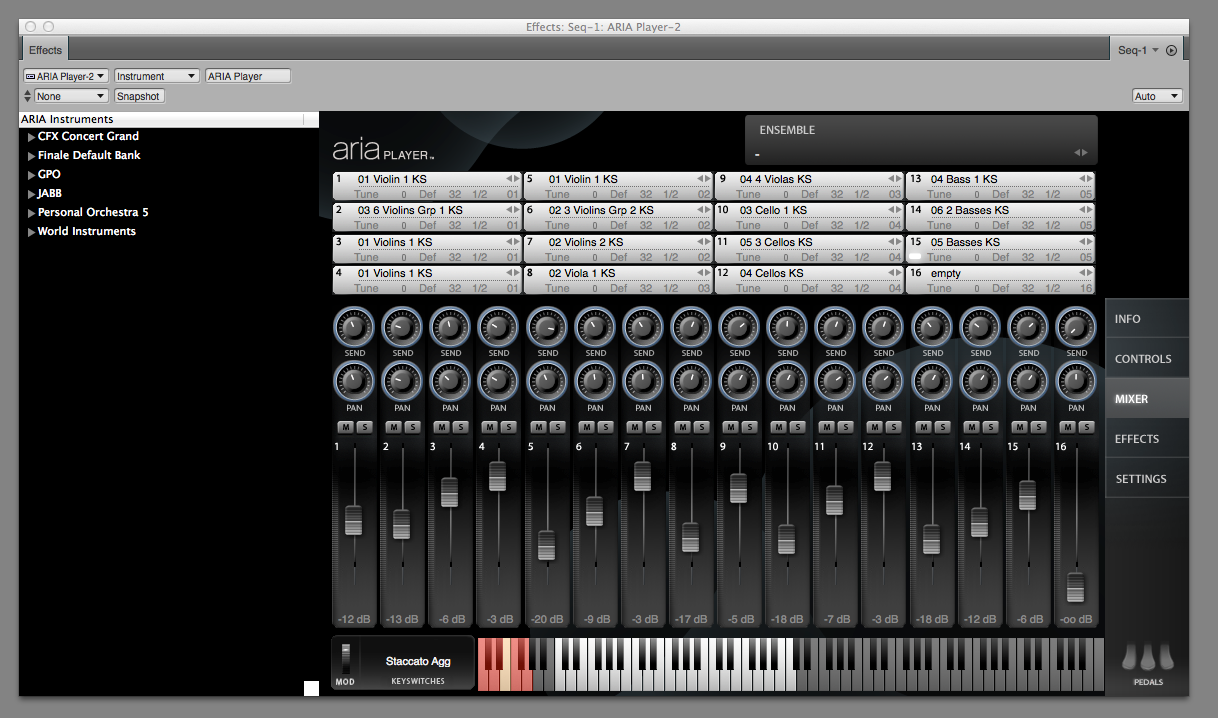

The solo patches of each member of the string family are included in the library as well as keyswitch patches. The sounds of these exquisite stringed instruments are now at your command.Īside from being sampled from some of the world’s finest instruments, the string patches in Garritan Personal Orchestra 5 are programmed in a way that allows for playability and customization. The string instruments in the Garritan Personal Orchestra 5 library are collectively worth millions of dollars, although the true value of any fine string instrument is in its sound, which is priceless. Amazingly, these string instruments have lasted hundreds of years and still have such a powerful and beautiful sound. Visit for a complete list of the string instruments in this collection. The string instruments in Garritan Personal Orchestra 5 includes a pair of Stradivari, a Guarneri, several Gaglianos, two Pierrays, two Montagnana cellos, a Testore, a Pallota viola, a Calcanius, a Klotz, a Vaillant, and a Betts, all of which were made in the seventeenth century. The string instruments all have four strings and produce sound the same way by drawing a bow across the strings or by plucking with the fingers. Violins have the highest voices and the brightest tone, basses have the lowest voices and darkest tones, and the cellos and violas fall in between. The string instruments look very similar, but differ in size and tone. The strings consist of four instruments-violin, viola, cello, and double bass-and are grouped into sections bearing the names of the instruments. Contemporary composers write orchestral music for television, film, and interactive media, as well as the concert hall. The finest orchestras tour foreign countries and serve as musical “ambassadors” for their respective countries. Today, most of the world’s major cities have their own symphony orchestra, which has become a symbol of cultural pride.
Garritan orchestra professional#
By the twentieth century some orchestras consisted of more than 100 full-time professional musicians. With a wider array of instrumentation and a growing body of musical works, the orchestra continued to flourish. Composers began writing longer, more complex works for larger and more varied groups of instruments.

People traveled for miles to see and hear an orchestra. Concert halls were built throughout Europe and North America to showcase the orchestra. As cities grew, the demand for musical performances increased. The golden age of the orchestra was born, and the orchestra finally emerged from its supporting role into prominence. In the 1600s and 1700s, the evolution of instruments accelerated and by the nineteenth century, the variety and number of musical instruments led to the need for a conductor. Small orchestras later accompanied operatic and theatrical performances and also played for royalty and the noble classes. They were often just an ad hoc group of musicians getting together and playing whatever instruments they had at hand. Early orchestras first emerged over 400 years ago. The combining of instrumentalists into string, brass, woodwind, and percussion sections is a relatively recent development in the evolution of the orchestra. In a modern orchestra, the players are seated in a semi-circle facing the audience and the conductor. The word orchestra derives from the Greek and refers to the semi-circular space in the front of the theater where performers stood. The term is commonly used to describe a large ensemble composed of strings, woodwinds, brass, and percussion. An orchestra is a group of instrumentalists who play music together.
Garritan orchestra how to#
Since the first cavemen learned how to produce sound, musicians have organized themselves into groups. The orchestra as we know it today took centuries to evolve.


 0 kommentar(er)
0 kommentar(er)
